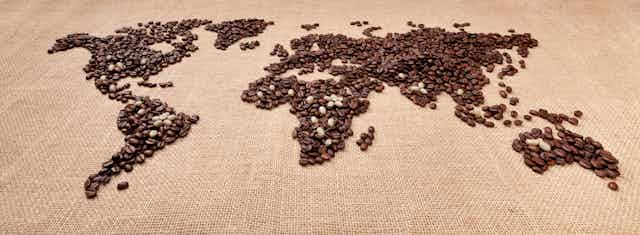Shopping can be confusing at the best of times, and trying to find environmentally friendly options makes it even more difficult. Welcome to the first instalment of our Sustainable Shopping series, in which we ask experts to provide easy, eco-friendly guides to purchases big and small.
The morning coffee ritual is serious business; Australians drink roughly 16.3 million coffees a day. Plenty of news coverage has been devoted to its health benefits and cultural significance, but how much do you know about the environmental cost of your daily latte?
Coffee is grown in some of the most biologically diverse regions of the world, sometimes causing significant damage. But there are choices you can make to reduce the ecological impact of your caffeine fix.
The issue
Coffee mostly affects tropical forests, as they are cleared to make way for coffee farms. But with certain cultivation practices, these coffee farms can support an impressive range of forest biodiversity.
The world’s most popular coffee type, Coffea arabica, grows under the rainforest canopies of Ethiopia. A natural requirement for shade means coffee is often cultivated under shading plants, from a single tree species to a diverse range of plant life.
However, to improve productivity, traditional coffee farms have been increasingly replaced with sun-tolerant coffee varieties that produce higher yields. Compared with shaded coffee, these simplified plantations support fewer native species, store less carbon, experience higher levels of erosion, and leach more nutrients. They also require more resources such as water and fertilisers.

How can we increase sustainability?
The most important choice when it comes to sustainable coffee is the actual coffee and its cultivation. Cultivation can contribute as little as 1% or as much as 70% of the total environmental footprint of a cup of coffee. How the coffee is consumed (instant, fresh grounds or pods, for instance) has less influence.
The lowest-impact coffee is grown using traditional cultivation methods with minimal mechanisation. At the other extreme are large farms that are highly mechanised and require more fertiliser and pesticides.
A combination of traditional cultivation methods, maintaining shading plants, protecting local forests and buffering waterways (filtering farmland runoff with vegetation before it enters waterways), has the lowest environmental impact.
What can you do?
While searching for your daily dose of caffeine, you have probably come across several different sustainability certification logos. They are the easiest way to find out about how your coffee is cultivated, and have proved effective in protecting coffee landscapes from degradation.
The two most prominent certification programs are The Rainforest Alliance and Australian Certified Organic.

The Rainforest Alliance requires a level of native vegetation to be maintained within each coffee farm. There is some criticism that the alliance has watered down its criteria in recent years, at least in terms of maintaining diverse shading vegetation. However, their certification leads to positive outcomes such as protection of waterways and native vegetation.

Australian Certified Organic is focused on protecting natural habitats and biodiversity, efficient water use, and minimising the use of chemicals in fertilisers and pest and disease management. These practices are strongly aligned with traditional coffee cultivation.
While certification programs are not perfect, logos can certainly act as a guide to sustainable products.
That said, products without logos aren’t necessarily unsustainable. Some small landholders with highly sustainable, shade-grown coffee can’t afford the expense of certification.
In this situation you can talk to your local roaster (or a distant one via the internet). Roasters may have direct relationships with their coffee growers and can tell you about their cultivation practices. Good questions to ask are whether the cooperative has any certification, whether the cultivation is organic or shade-grown, and whether the cooperative has any associated environmental programs.
Ultimately, a little knowledge of coffee cultivation and its impacts can go a long way in making wise and environmentally sound purchases. There is a huge range of coffee choices available, and good evidence that the choices you make can influence significant and positive environmental outcomes.

